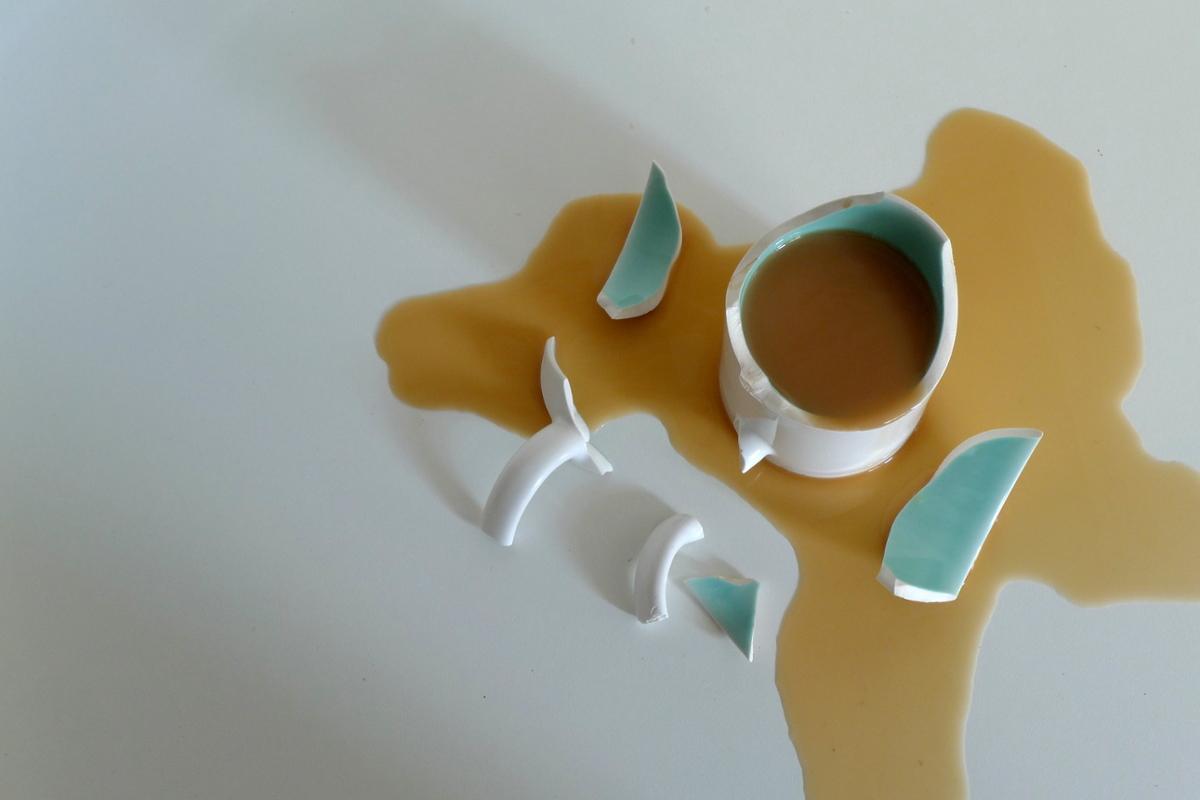Why is it so easy to break a coffee cup if it's already cracked? That's the question in this Moment of Science.
To break a coffee cup you have to pull atoms far enough apart--maybe a millionth of an inch--so they no longer bond to each other.
All along the crack, atoms have already been separated. The point of interest is at the tip of the crack--where the crack ends in solid material. To make the crack just a little longer, all you have to do is separate a few more atoms.
The important principle here is leverage.
Leverage is the principle that allows you to pull a nail out of hard wood with a crowbar. A small force at the end of a long crowbar becomes an immense force pulling on the nail. The crowbar has the effect of magnifying the force you apply to it.
Usually, a cracked coffee cup breaks because something hits it or presses on it with a force. The two sides of the crack act as levers, transmitting that force to the tip of the crack like little crowbars, pulling atoms apart. As the crack proceeds through the cup, these levers get longer, so they pull atoms apart with even greater force. The longer the crack becomes, the easier it is to make it just a little longer.
To break a coffee cup you don't really have to pull billions and billions of atoms apart all at once--you only have to separate a few atoms at the tip of the crack, then a few more after that, and a few more after that, and so on all the way to the other side of the cup.
In real life all this happens in a split second as the cup hits the floor. High-speed photographs show that cracks travel through brittle materials like ceramics and glass at thousands of miles per hour.
A split second is all it takes to break a coffee cup.










